-
Posts
45 -
Joined
-
Last visited
Content Type
Profiles
Forums
Events
Store
Downloads
Gallery
Posts posted by Wouter
-
-
Hi Bruce,
Thank you for the input. It might. I was wondering why you would think of a cherry blossom? Have you seen a similar stamp elsewhere?
At first I really thought it was rust, or damage. But, having seen the exact same 'thing' on another blade from Kanetomo (unfortunately I didn't save the picture) and on the exact same location (mune between 2 inspection stamps) and from the same year (Showa 17) I just can't accept it to be mere coincidence...
I'll keep looking...
Wouter
.
Hi all,
After endlessly browsing through the net, I finally found an example of the little marking I found on the mune, on a different blade.
Of all places, I found it in this topic.
I am sorry, I didn't know how to 'quote inside a quote', so I hope this will lead you to the correct post: zentsuji2, on 04 Mar 2014 - 10:35 AM, said:
and the Google link: http://www.militaria.co.za/nmb/topic/5999-arsenal-stamps/page-8
The small mark/stamp(?) is exactly the same, so there is definitely something there. However, it is not in the same spot on the mune, but between the arsenal stamps. Also the smiths are different: Kanetome vs Kanemoto. And, mine isn't star stamped, but a good candidate to be gendaito.
It would be interesting to know the date of Ian's blade...
Looking forward to your input,
Best regards,
Wouter
-
Hi Klaus,
I'm only a beginner, but I did notice the
SekiShowa stamp above the mei.So indeed a high price for a -most probably- "machine" made blade.
Wouter
-
In all fairness, Mr. Tsuruta's comment (which shouldn't have been posted here in the first place, being made in a private e-mail conversation) is the opinion of most dealers and many collectors in Japan. If that opinion of the NTHK-NPO is deservedly low or not is an entirely different topic. Fact is that one very seldomly sees NTHK (both groups) papers accompanying a sword for sale by a dealer in Japan.
Thank you for your feedback, Guido.
Would that then also count for tosogu, I wonder?
Cheers,
Wouter
-
Thank you all for your very valid feedback.
Am I right in concluding that the question here is not wether the papers are real, but what value we attribute to certain papers / organisations?
As Brian so eloquently put: NBTHK is the de-facto, but the other organizations owe our respect.
Doesn't it all come back to the same questions: is it real, if so: from whom and when?
Isn't this what this whole forum is about? And seeing the growing number of posts and members, it is clear that knowing the answers is a steep, but very satisfying path to wander.
Maybe, but, what counts for me, rather than (re-)submitting for NBTHK, I adore and admire these tsuba. I cherish them, will guard them and pass them on when the time comes.
Wouter
-
 1
1
-
-
-
Hi all,
There has been written a lot already about this topic.
But, having the specialists here at hand and always happy to learn more, I decided to post a new topic, hoping not to inconvenience you too much.
The NBTHK origami looks legit to me, but is on green paper, hence old.
Not so sure about the NTHK origami. it seems not to be conform with examples I found online.
Both tsuba feel great in hand.
Looking forward to your feedback,
Best regards
Wouter
-
I humbly bow down in the shadow of your immense wisdom.
The Habaki was stuck, I gently removed it today. Adding the pictures here for completeness.
No signs of any stamps anywhere.
Wouter
Reposted in the Military section of this forum, since that is where this katana belongs.
Wouter
-
-
Thank you all for the excellent feedback.
So Showato from Seki.
Taking a risk here, since I should rather post this question in the military section, but since I see the same contributors popping-up here:
One of the reasons why I bought the sword was because of the estimated age: 1920 - 40.
Before the war, so wouldn't this in theory exclude the mass-produced Showato?
But, the tang does look not right and thinner than it should be.
Leading to the conclusion someone was trying to mask it's mass produced (arsenal stamps etc.)
Do I regret this buy: not at all. Excellent Iaido blade with some history and I have been educated and hope this topic will also benefit others.
Have a great weekend,
Wouter
-
Thank you, Hamfish, Fuuten and Paulb for your valuable feedback.
Lesson learned: check.
Not that it will make a huge difference, the kissaki looks odd due to my poor photographic skills, in reality it is clearly defined.
But, for 150 Euro, I wasn't looking for a miracle find.
Wouter
-
 1
1
-
-
-
I did it again and sinned against the PPP-rule for purchasing (Perfect-Polished-Papered).
However, this katana was so cheap and since I am studying (not sinning against that forum rule), it looked promising to me, so I couldn't let it pass me.
Besides, I practice Iaido and in some far future will be using a real blade. Since this one fits me, I won't send it for a polish, but would be using it.
I purchased it from an M.D. in the Czech Republic, he bought it 8 years ago in an antique shop near New York City.
Here following is the info he got with the katana,
I’m recopying it here and would like to get your feedback (is the description correct; your opinion; has the tang been reshapen; (very slight chance, but:) has anyone seen this katana before, etc)
§Blade: age - early 20th century. (1920-1940)
o Total length: 83, 5 cm, blade: 63 cm.
o Original polish, healthy massive blade, shinogi zukuri, suitable for chopping, cutting, without a signature/date on the tang, legible Guno Hamon Choji.
§Tsuka: age - early 20th cent., Or older. Dimensions: 23,5 x 4 x 2,3 cm. Material: wood, white stingray, the original braid - wear and tear, paired Fuchi and Kashira of copper alloy Engraving, phoenix and flowers, paired Menuki: flowers.
§Tsuba: age – possibly 19th century, or older. Dimensions: 5 x 6,5 x 0,5 cm. Iron, carved and engraved Kakugata sukashi tsuba.
§2x Seppa and Habaki.
§Saya: lackered wood, used.
§100% of Japanese origin.
Looking forward to your feedback
Wouter
-
Hi Bruce,
Thank you for the input. It might. I was wondering why you would think of a cherry blossom? Have you seen a similar stamp elsewhere?
At first I really thought it was rust, or damage. But, having seen the exact same 'thing' on another blade from Kanetomo (unfortunately I didn't save the picture) and on the exact same location (mune between 2 inspection stamps) and from the same year (Showa 17) I just can't accept it to be mere coincidence...
I'll keep looking...
Wouter
Souter, any chance that tiny character might represent a cherry blossom (5 leaves)?
.
-
Hi,
Thank you for starting this so needed thread.
Last May I bought a Type 98, signed Seki-Ju Kanetomo (confirmed Miwa Kanetomo), dated Showa 17, June.
More details and pictures- and questions- are posted here
The tang is not star stamped.
On the mune there is a Na(goya) and Ho control stamp, and the number "1", matching the seppa and tsuba.
There are no other stamps anywhere on the sword.
What is intriguing is what seams to be a minuscule star stamp between the Na and Ho.
At first I thought it was rust and I was "wishing upon a star", but I have seen a similar stamp (?) on another sword by the same smith at the exact same spot. Unfortunately I was unable to take a picture.
I have not been able to find any information and was hoping you could help me?
Looking forward to your replies,
Best regards,
Wouter
I should also add I have visited a toshigi and after close inspection he is 95% sure the sword is a gendaito (= traditionally made - tamehagane/folded/water tempered). The resting doubt will be confirmed once the blade is polished.
W
-
If he can provide a short background, who he trained under etc..I would be happy to add him to the restoration links.
Sorry the link wasn't working.
He only speaks Czech, but his wive speaks English, as well as French.
They have quite a lot of international clients, so they do manage.
His teachers can be found on his website (via the link provided by Stephen), which is unfortunately only in Czech, but not that hard to navigate.
Brian, maybe you should ask Pavel directly if he would like to be added to the restoration links? His email address is nipponto@nipponto.cz .
You may of course mention my name.
BR
Wouter
-
Update:
Almost by accident I discovered there is actually a Japanese trained toshigi living and working in the Czech Republic.
I met him recently at his place and we spend a day talking swords and he showed me his work.
He also closely inspected my blades, including this Type 98, and he is 95% sure it is traditionally made and I'm on the -very long- waiting list for a polish.
BR
Wouter
He gave me permission to publish his site on this forum: nipponto.cz
In the past he was actively participating on forums, but has "retired" from that part of the nihonto-world to be able to fully concentrate on his clients.-
 3
3
-
-
 Screen Shot 2016-07-06 at 11.08.27.png
Screen Shot 2016-07-06 at 11.08.27.pngHi all,
I still have not found an example of this stamp on another mune.
However, on Ohmura's site (http://ohmura-study.net/711.html) I found the what I think is the stamp under discussion.
What I thought was a star, looks very similar -even in size- to the "Se" inspection stamp of the Second Factory of the Kokura Army Arsenal.
Then again, the other stamps on the mune ( a Mai, or Nagoya arsenal inspection stamp and a Ho inspection stamp, accompanied by the number 1 - as on the sepa) are from another arsenal...
Have you seen any occasions where swords bear stamps of multiple arsenals?
Best regards,
Wouter
Or is it the name of the inspector? (Screenshot also from Ohmura)
BR
Wouter
-
Sorry, but cant see any star stamp.
Hi,
Thank you for starting this so needed thread.
Last May I bought a Type 98, signed Seki-Ju Kanetomo (confirmed Miwa Kanetomo), dated Showa 17, June.
More details and pictures- and questions- are posted here
The tang is not star stamped.
On the mune there is a Na(goya) and Ho control stamp, and the number "1", matching the seppa and tsuba.
There are no other stamps anywhere on the sword.
What is intriguing is what seams to be a minuscule star stamp between the Na and Ho.
At first I thought it was rust and I was "wishing upon a star", but I have seen a similar stamp (?) on another sword by the same smith at the exact same spot. Unfortunately I was unable to take a picture.
I have not been able to find any information and was hoping you could help me?
Looking forward to your replies,
Best regards,
Wouter
Hi all,
I still have not found an example of this stamp on another mune.
However, on Ohmura's site (http://ohmura-study.net/711.html) I found the what I think is the stamp under discussion.
What I thought was a star, looks very similar -even in size- to the "Se" inspection stamp of the Second Factory of the Kokura Army Arsenal.
Then again, the other stamps on the mune ( a Mai, or Nagoya arsenal inspection stamp and a Ho inspection stamp, accompanied by the number 1 - as on the sepa) are from another arsenal...
Have you seen any occasions where swords bear stamps of multiple arsenals?
Best regards,
Wouter
-
Thank you, Steve.
It was a wild request and I am in awe for your knowledge and most obliged for your very swift reply.
This sheds a whole new light on it, a whole new area to discover, but not changing the fact that I totally admire how the artist captured that expression.
Cheers
Wouter
-
Hi all,
Maybe this is a wild request, but I sincerely hope someone here will be able to help me out.
I found this old postcard and am mesmerised by the artistic quality of the image.
I practice Iaido and the image -in only a few simple lines-perfectly represents to me the total determination before a lethal cut.
Since it is a postcard and the image is so stunning, I'm supposing it is a reprint of a famous ukiyo-e?
So, if my assumptions are correct, I would love to find out more about the artist...
Looking forward to your replies
Wouter
-
 1
1
-
-
Thank you all for the very useful information.
I have to apologize for the very poorly chosen title, since I never had the intention of buying this 'eye soar'.
Even my untrained eyes had detected the very doubtful quality.
I did see an opportunity to learn and I have.
All your advice is taken to heart and yes, my main investment now is books.
Next purchase will be P-P-P.
Unless something falls from the sky.
Being a hopeless romantic, I never stop dreaming.
Wouter
-
Hi Wouter,
Since the title of your thread is "Purchase advice needed" let me give you some. Before you spend a penny on a sword, you need to learn a whole lot more about Nihonto than you now do. The fact that you weren't sure about the train wreck of a fake above tells us that you are exactly where each of us was back when we started. If you spend time and money on study (here at NMB, at sword shows, with good books, other sites online, visiting collections, etc.) you will be much better prepared to buy something you'll be proud to own.
You wouldn't expect to walk into a flea market as a rube and come away with an old master oil painting; works the same with Japanese swords. Buy books first; swords later.
Grey
Poor is the pupil who does not surpass it's master. (Da Vinci)
-
-
Very nice find Wouter! I enjoyed the story. There were many battles prior to WW2 were the Russians and Japanese went at it in the far east, he probably earned that sword at Port Arthur. I would name the sword "Shinda Buta" just like Blackthorne's "Oil Seller".
Best Regards,
Bob
Thank for the tip, Bob.
This weekend I have planned a trip to the library. I have some catching-up to do on conflicts between Russia and Japan.
Following your great advice, the blade will be known henceforth as 死んだ 豚 (Shinda But a).
Kampai.
Wouter


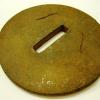
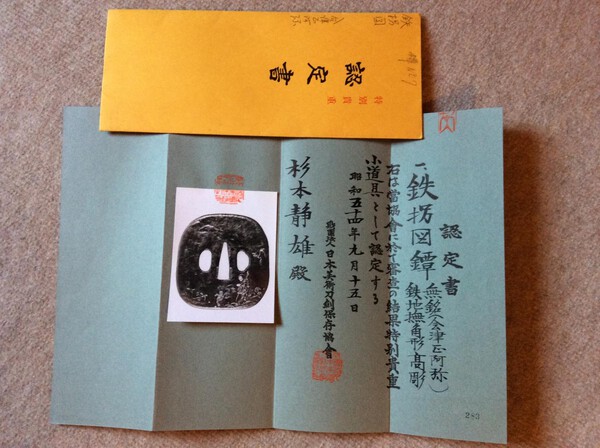
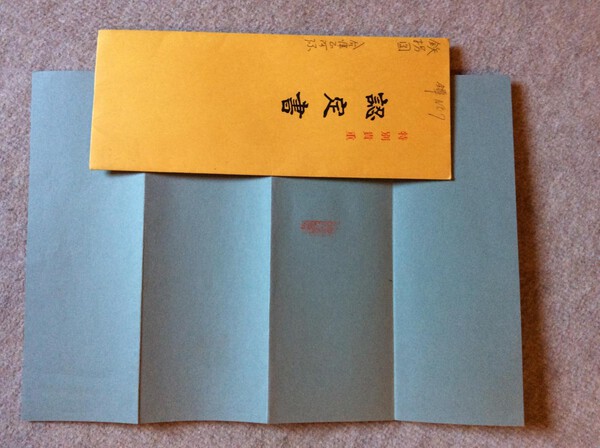
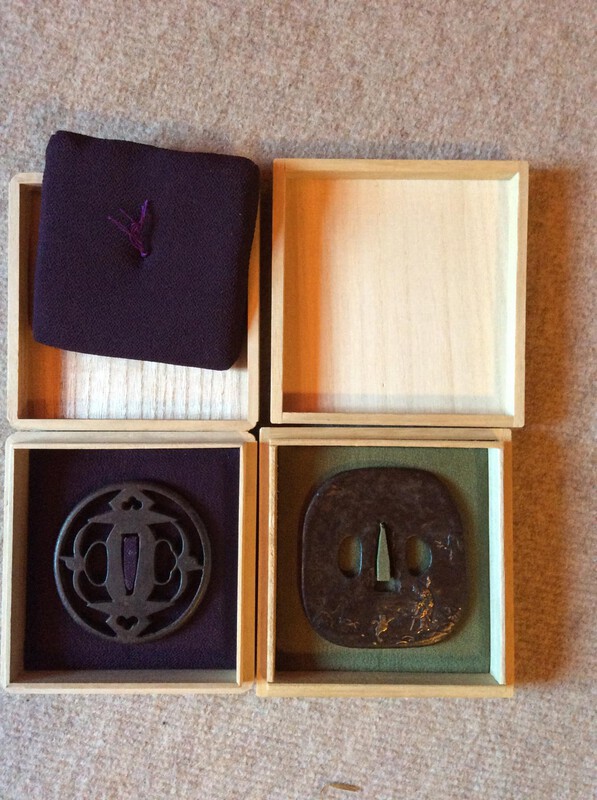
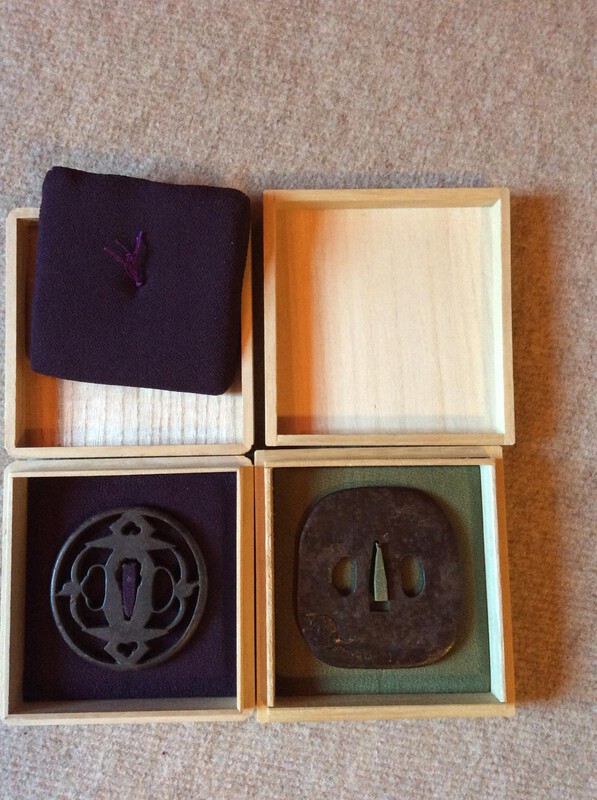
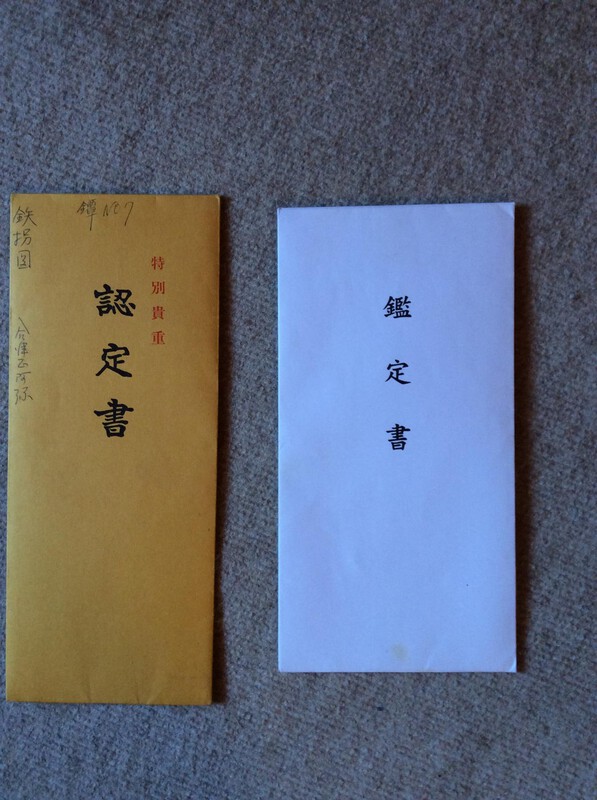
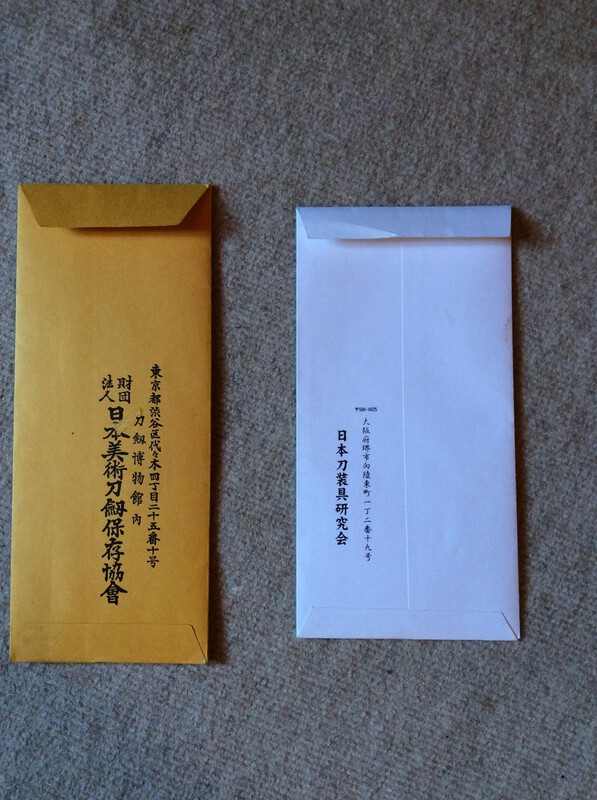
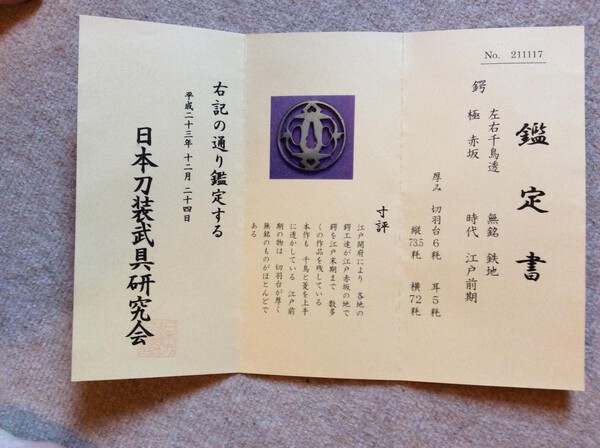

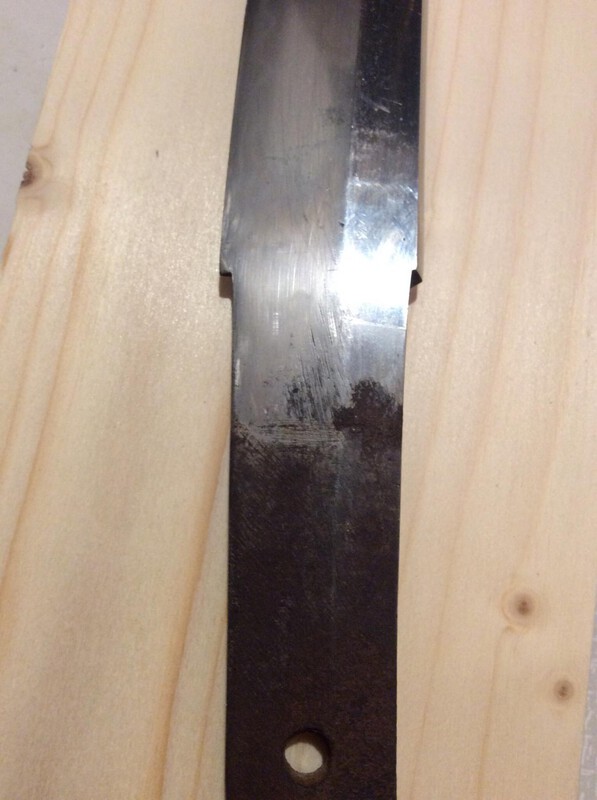
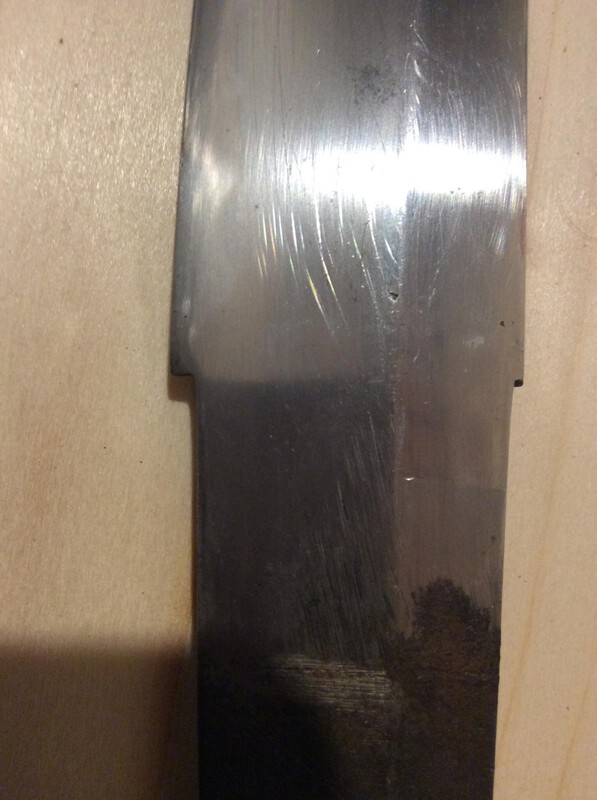
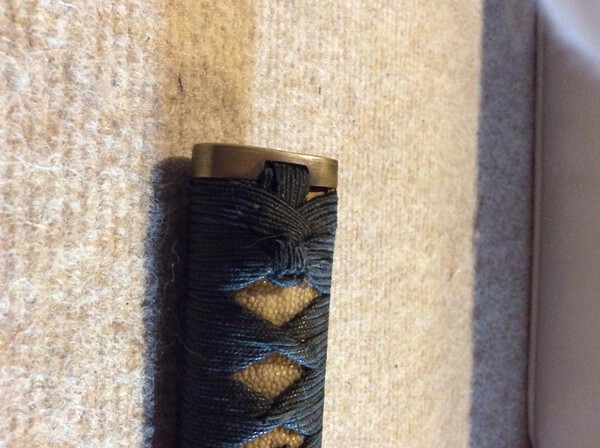
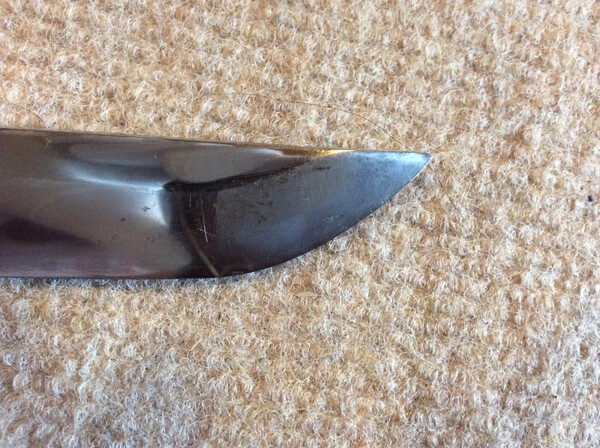
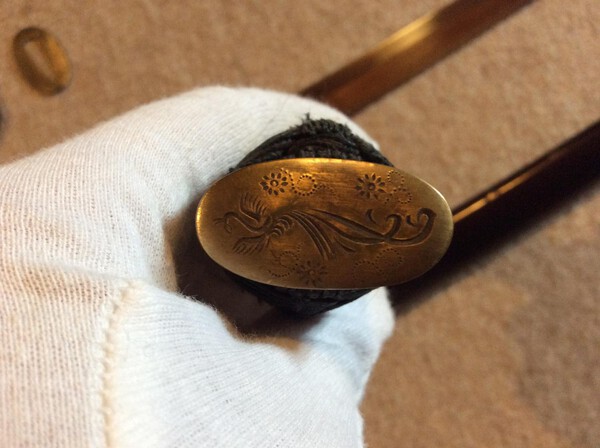
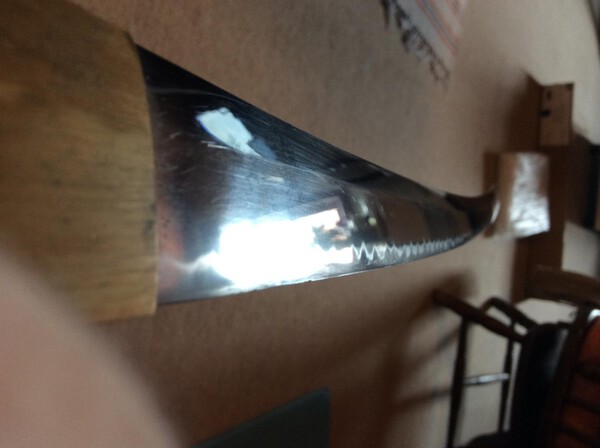
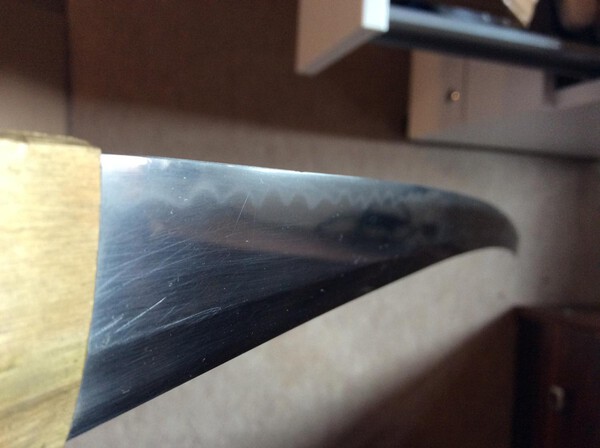
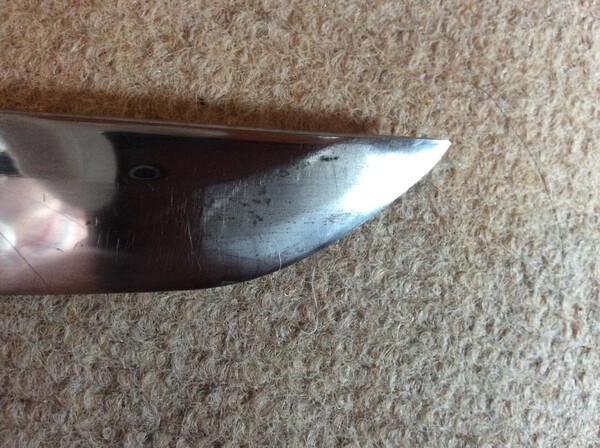
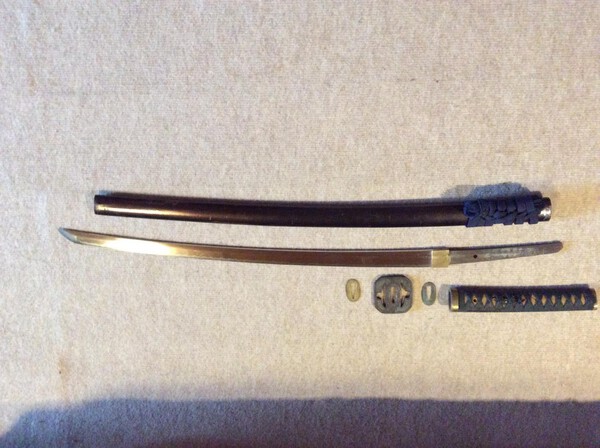
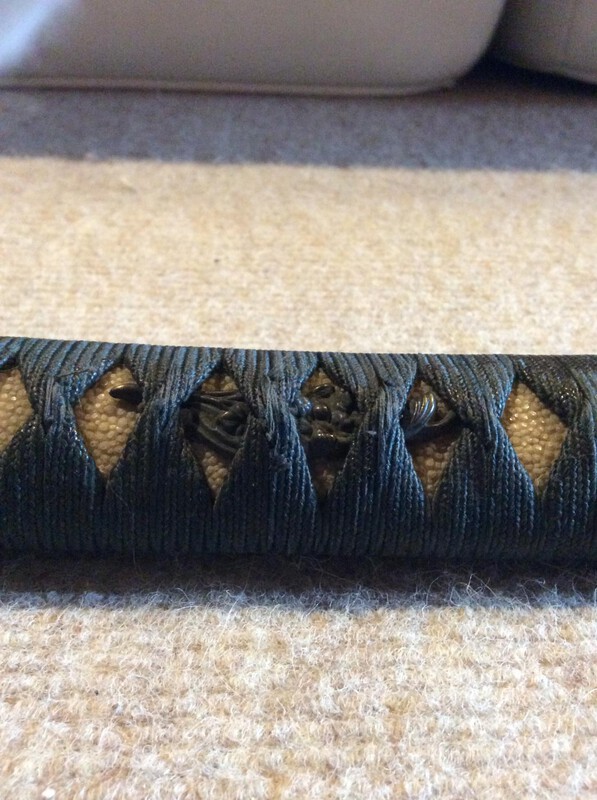
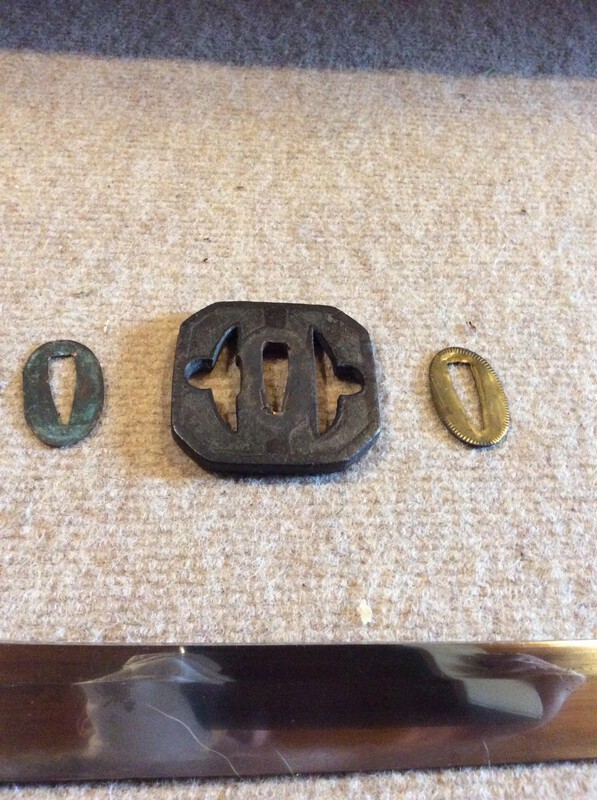

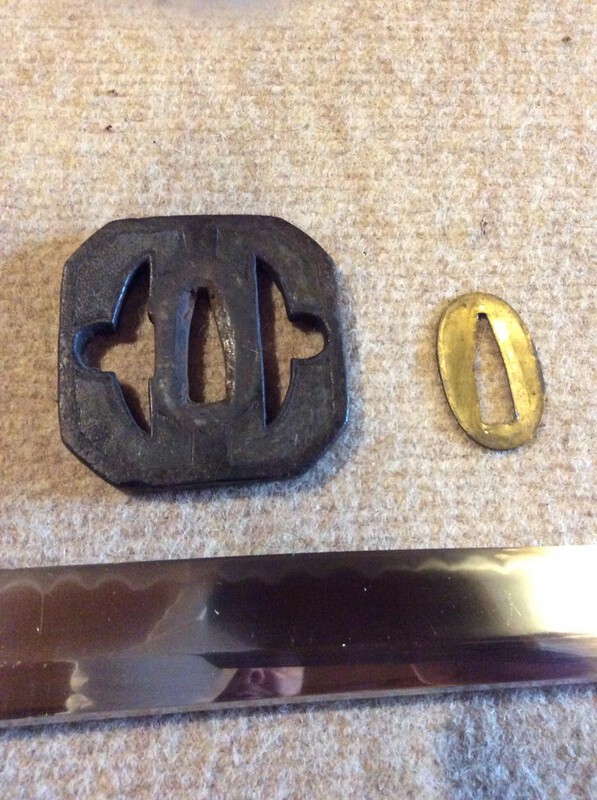
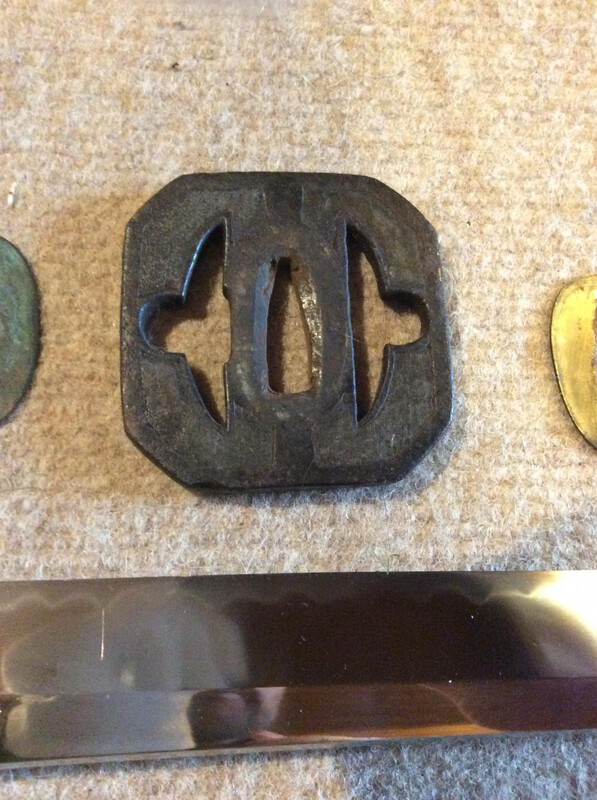
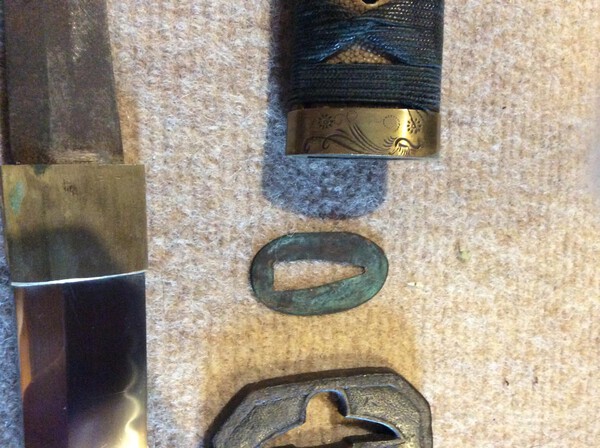
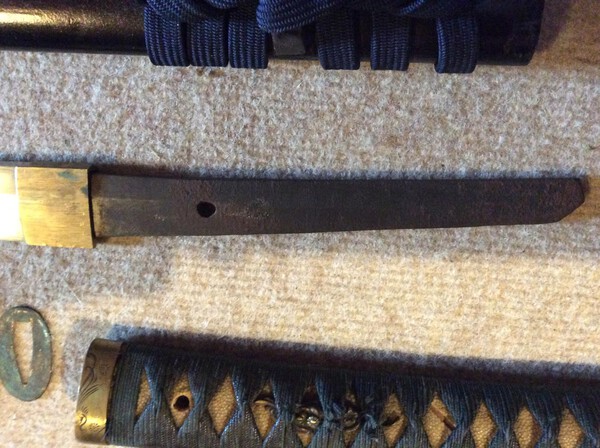
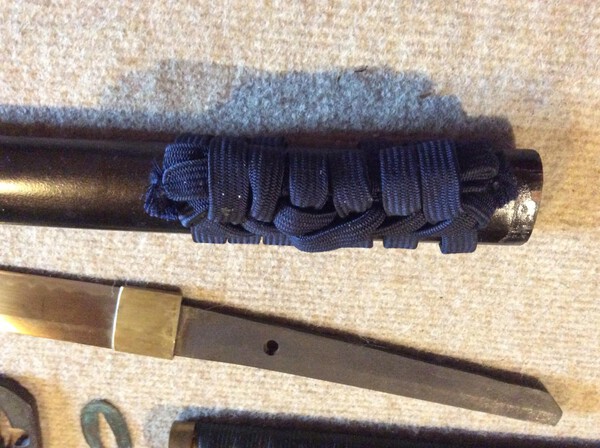
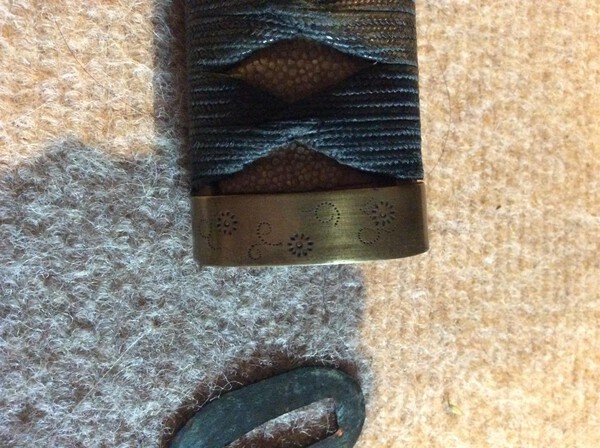
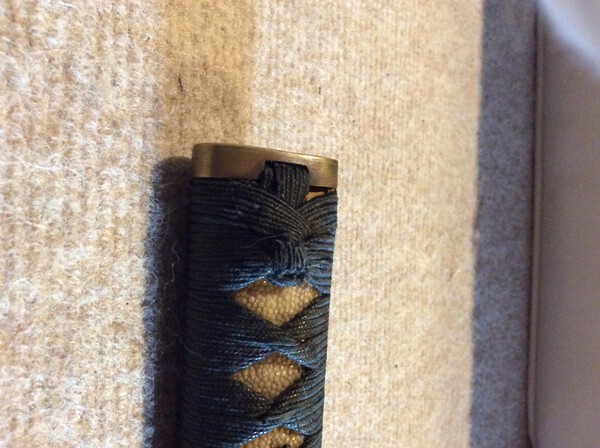



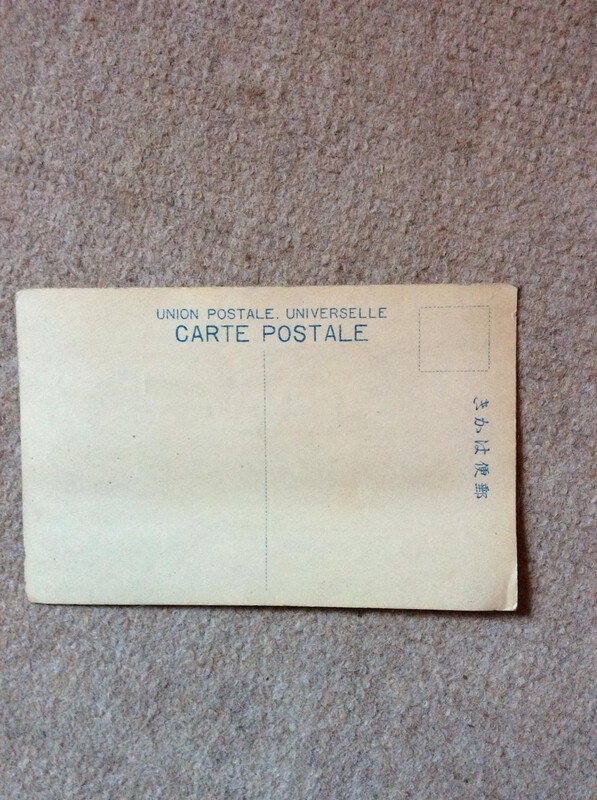

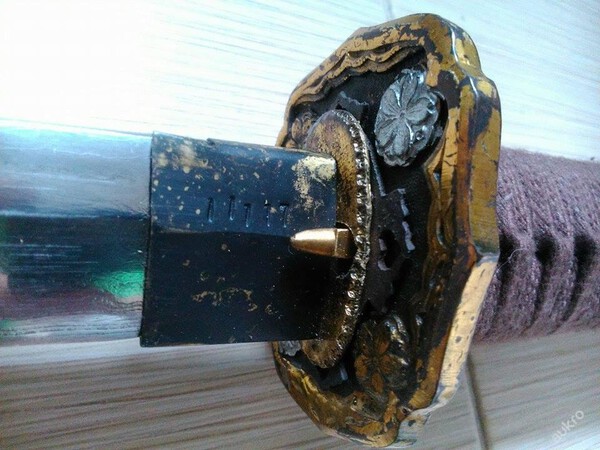

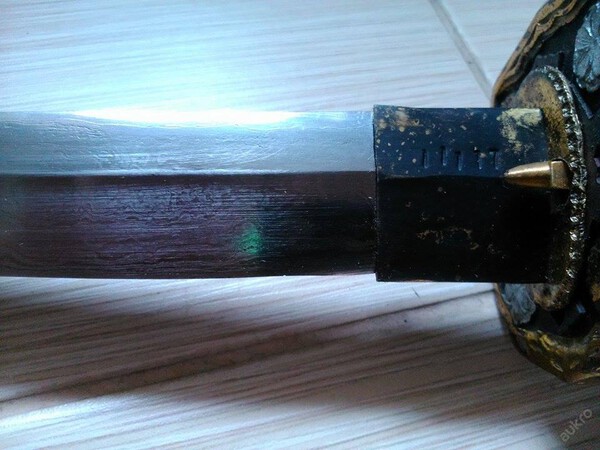
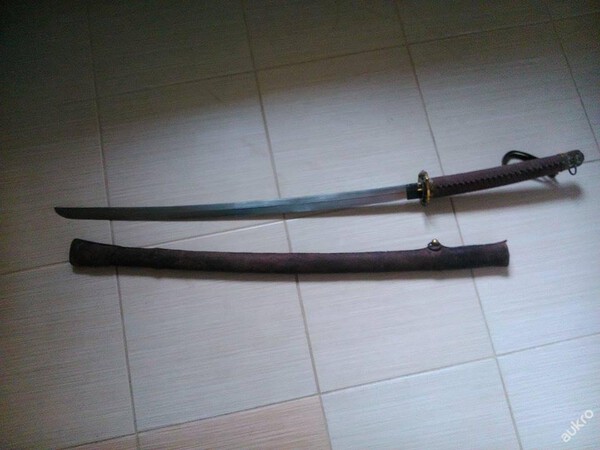
Restoration Of Tosogu, Nihonto, Etc...
in General Nihonto Related Discussion
Posted
Thank you for starting this interesting discussion.
It couldn't have come at a more appropriate time, since it is a question I currently need to answer.
I'm totally aligned with the difference between restoration and preservation, however in my particular case, restoration seems to be the only option, but...
Let me try to explain: I purchased a wakizashi which came with beautiful attire.
The wakizashi is on a waiting list for polishing and I started to look into what could be done with the tosogu.
The wakizashi had a very hard life and has been damaged, especially the tsuba, or rather the mon,
Since some of the mon are damaged, or are missing, the tsuba has lost a lot of its value,
So, the only option is restoration, by replacing the mon,
However, on close inspection it would be clear that the mon had been replaced by 'modern' copies.
So, what should one do in this case?
Preserving, knowing that the value has been decreased a lot because of the missing and damaged mon.
Or, restoration, knowing that the tsuba will never pass shinsa because of the restoration...
I sincerely hope I haven't hijacked this topic with personal struggles. I do feel it puts another light on the whole discussion started by Steve.
Cheers,
Wouter
PS For the sake of the discussion, let's -for now- not include the abilities of the restorer. I am perfectly aware that artists like Ford Hallam would do an amazing job, but I do think the question remains: if mon are replaced, what is the effect on the historic and monetary value?